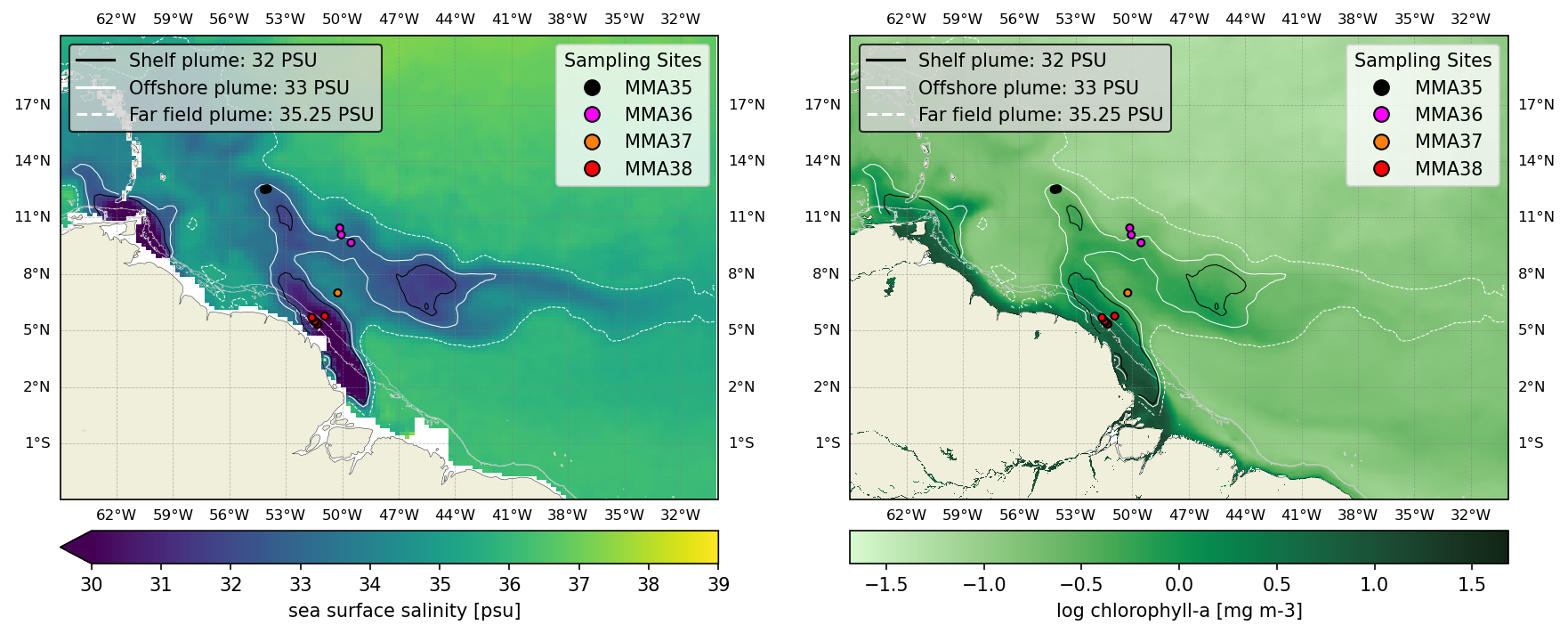How physical processes shape the surface carbon export to depth
The ocean plays a central role in regulating Earth’s climate by absorbing and redistributing vast amounts of carbon. A key mechanism behind this regulation is the biological carbon pump, which transfers organic carbon from the surface ocean to deeper layers. Traditionally, this process has been viewed as a mostly vertical flux, where sinking particles carry carbon into the ocean interior. However, this vertical-only perspective overlooks a critical component of the ocean’s carbon dynamics: lateral transport. In dynamic regions such as the Amazon River plume, large quantities of organic carbon are retained within the surface layer and transported horizontally, often hundreds of kilometers, before eventually being subducted or remineralized. This lateral redistribution is largely driven by physical processes such as mesoscale eddies, submesoscale filaments, fronts, and wind-driven circulation, which stir, trap, and subduct organic-rich waters across shelf-to-open-ocean gradients. These mechanisms reshape the timing, location, and depth at which organic carbon is exported, thus modifying the efficiency of carbon sequestration and the biogeochemical structure of downstream regions, including the mesopelagic zone and oxygen minimum zones (OMZs). Understanding these physical-biogeochemical couplings is essential to improving carbon budget assessments and predicting how the ocean will respond to climate change and land–ocean interactions.

In my current position, I am using Underwater Vision Profiler (UVP) data to quantify the particulate organic carbon (POC) content and vertical fluxes in different hydrographic regimes of the Amazon River plume. I also examine how particle types (aggregates vs. fecal pellets) and zooplankton communities influence the magnitude and efficiency of export from the euphotic zone. These in situ observations are critical to understanding how biological and physical drivers shape vertical flux profiles.
Building on these observations, I'm interested to simulate how organic carbon is laterally transported from the Amazon plume into the open ocean and deeper layers and what kind of transformation they are subjected to during this advection. This work will assess how physical processes (e.g., stratification, mesoscale eddies, subduction) interact with biogeochemical transformations to determine whether exported carbon is remineralized near the surface or sequestered in the mesopelagic zone, where it can fuel respiration and impact oxygen availability.
Related talks and presentations
-
- Silva, D. and van Sebille, E. and Lopes, R. M. (2025). Particulate Organic Carbon Export in the Amazon River Plume. Parcels 10th Anniversary - October 4 - Oral presentation.
-
- Penninck, S. and Lopes, R. M. and Silva, D. and Tuchen, P. and Baudena, A. and Stemman, L. and Brandt, P. and Kiko, R. (2025). Influence of upper-ocean physical processes on carbon flux variation in the mesopelagic equatorial Atlantic. Final Scientific Conference, AtlantECO - Oral presentation.
-
- Silva, D. and Santos, G. and Penninck, S. and Silveira, I. C. A. and Guidi, L. and Elineau, A. and Calil, P. and Lopes, R. M. (2025). Flow-topography interactions drive zooplankton abundance and carbon export to depth along the Vitoria-Trindade Seamount Chain (Southwest Atlantic). Final Scientific Conference, AtlantECO - Oral presentation.